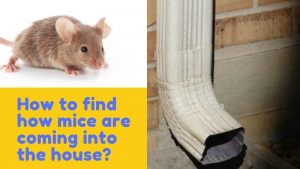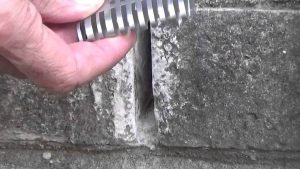The hazards of rat infestations in your home are plenty and dangerous. Not only do they eat into your electrical wires, aluminum, and lead sheeting, fiberglass, vinyl, plastic, and rubber, but also crawl into the tiniest space and climb all kinds of surfaces such as concrete, wood, brick and metal. So, once they are in your home, getting rid of them is a Herculean task.
Importance of Rodent-Proof Construction
Rats and mice damage all kinds of structures, not just homes. So, you could easily find them in hotels, retail offices, stores, hotels, warehouses, farm buildings, and any other structures.
Once you have rats or mice in your home, you can expect them to destroy your wiring, insulation and plumbing, putting you to great financial loss. Often, electrical wiring damaged by rodents can cause fires, leading to loss of property and your own safety.
On the health front, rodents are carriers of several diseases, including leptospirosis, salmonellosis and murine typhus, swine dysentery, TB, brucellosis and sarcoptic mange, which also affect pets and livestock.
Can rats climb walls?
We may seem defeated when we find that rats and mice can be everywhere that we are—in our homes, up our walls, on our vinyl siding and much more. That’s because not only are they extremely agile, but they are supported in their endeavors by their small claws and sharp nails that help them hold onto any surface, no matter how uneven its surface area.
They can successfully climb surfaces like concrete walls, wood finishes and brick walls. However, they can’t climb polished surfaces like glass and smoothly painted walls because these surfaces lack spaces where the rodents’ claws can grip it, so they could easily slip down these polished surfaces.
Let’s take a look at the various surfaces they tread:
Walls: If walls have uneven surfaces, it will be very easy for rats to climb them. So, the answer to the question, “Can rats climb walls?” is a resounding yes. Of course, they won’t be able to do this on smooth wall surfaces.
Can mice climb drywall? This question should bother you, as mice can, in fact, climb drywall. And they do it in this way: Drywall has small air pockets which mice use to latch onto so that climbing up the wall surface is easy.
And not just that. Mice can climb brick walls. The uneven surface of brick walls is perfect for the rodents that only need to latch their claws onto on their way up the wall.
Can mice climb smooth walls, did you say? Well, in fact, smooth walls pose a problem to rodents since they find smooth wall surfaces difficult to negotiate. That’s because these walls do not have any surface area onto which they can hook their claws, which makes climbing up very difficult.
They can also climb vinyl siding if its surface area is uneven. But often, vinyl siding comes with a smooth finish, which these rodents find difficult to climb up. However, again for the same reason of having a smooth surface area, they can’t climb a metal surface.
However, 99% of all occasions, they can climb stairs since they have a good surface area of carpet or wood for traction. With a gripping surface like one of these, they can make it upwards on their own.
What to Consider before Building a Rodent-Proof House
Before actually constructing a rodent-proof house, your architect and his team should bear in mind the traditional history of rodents in and around the construction site. This problem should be tackled at the preconstruction stage. The team should take these points into account:
- Contractors should maintain a clean and hygienic site. If rats are found, the site should be cleaned using exterior surface materials that will come into contact with the ground, fences and other areas of rodent communities.
- To prevent rodents from climbing up exterior walls, a decorative band with a smooth surface, measuring about 14 inches to 18 inches in width can be placed around the perimeter of the building.
- Protect double walls near the floor or foundation using hardware cloth, galvanized sheet metal, concrete or any other method. Close openings between the siding and foundation with 24-gauge galvanized flashing.
- To prevent the rodent population from growing, install permanent rodent service access areas around the building’s exteriors. Built in cupboard shape, these areas can begin to be built at ground level and should be embedded into the foundations or walls, and are near trash areas.
- Each such station should have an automatic mouse trap that is capable of catching many mice or rats. It should also have a bait station with poisonous baits. The door of the station should have tamper-resistant locks, screws and bolts and come with two openings at ground level for rats and mice to enter it.
These house construction methods should be used by professional builders.
How to Have a Rodent-Proof House?
If you’re up against rat infestation in a big way, the way out is to limit the damage by constructing a rodent-proof environment. Your home should be designed by taking into account the prevention of entry of rats. Besides, it makes better sense and will be less expensive to include rodent-proof construction techniques into the building of your home rather than trying certain rodent exclusion methods later.
What is Rodent Exclusion?
The methods you use to get rid of rodents in your home permanently is referred to as rodent exclusion. Here are some preliminary steps you can use:
- Close all possible entry points to your home—even the tiniest hole is big enough for mice who can wiggle their way in. Check the exterior of your home like the attic and basement for any gaps in walls and windows. Perhaps the utility pipes that lead into your home and those around the doors and windows have small holes. Once you eliminate all of these, you won’t have any rat infestation.
- Ensure that the food in the cupboards of your kitchen is kept tightly shut in plastic containers. Don’t leave any food out on the countertops. Mouse poop means they’ve been eating your food, so be careful not to leave anything out.
- Lastly, remove any nesting possibilities for rodents. Though this might not be possible in homes because rats will enter walls too, but you can prevent them from nesting in your storage areas. Get rid of unnecessary clutter because they will nest there too.
- Good and hygienic sanitation methods should be practiced by the occupants of a house. For instance, all rubbish piles must be immediately eliminated, wood piles should be got rid of in landscaped areas and garbage cans should have tight-fitting covers.
Rodent Exclusion Methods You Can Use:
You may choose from a wide variety of rat exclusion products and methods to keep rodents out of your house, but please ensure that the final patch is always smooth. This will deter rats from entering your home as they can maneuver smooth paths.
Ordinarily, with the help of their whiskers, rodents feel holes in which they can fit in easily. From this point onwards, they gnaw the material of the gap (eg wood or steel) and enlarge the gap till it’s large enough for the rodent’s head to fit through easily. If a rat needs ½ inch for its head to fit through a hole, so does the rest of his body. Mice need barely ¼ inch to squeeze through.
Building Exteriors
Here are a few things you can do to have a rodent-free home. Try these methods for the exterior of your home:
- Copper mesh: Use copper mesh around utility lines and pipes. Also, stuff them into wire and pipe openings, such as around outdoor taps, gas meters, telephone or TV cables, and wires, etc.
- Foam gun: Black Gun Foam is a polyurethane, UV-resistant and moisture curing foam. It expands into cracks and voids and is excellent at sealing entry points against rodents.
- Joints: Joints where pipes and cables enter homes need special attention in preventing rats from entering.
- Earthquake design: Using earthquake safety joints can give rodents passage from the basement of your home to the top of the building. To avoid this, you can use 1.4 inch welded hardware cloth in the joints between floors.
- Sidings: If there are cracks or tiny holes in building sidings, they can be filled using painter’s caulking. However, if the gaps are larger, foam or wire mesh can be used before using caulking. Holes with voids can be successfully covered with slender galvanized sheet metal followed by a coat of paint.
- Door and window frames: Usually, tiny holes near door and window frames can be closed with painter’s caulking or painted once the caulking dries. Metal thresholds, metal kick plates or tight-fitting door sweeps on exterior doors are options, if the clearance between the door and floor doesn’t exceed ¼ inch.
Ensure that your windows shut completely and their metal screening is in place. Seal all cracks or gaps around window and door frames with caulking or repair the facings.
- Utility lines: Caulking compounds can be applied to any gaps and holes near plumbing, electrical lines and drain pipes, air conditioners, and their ducts and gas lines. Two more options you can successfully use are sheet metal and hardware cloth.
- Vents and chimneys: Where possible and safe, screen the open ends of exhaust, plumbing, air vents, heating vents and other pipes using ¼ inch hardware cloth. Don’t use flapper-type vent ends as they aren’t as effective as the terminal ends for clothing dryer vents which exhaust air vertically and are overall more effective. If you have a fireplace chimney, install rodent-proof chimney guards.
- Foundations and trailer skirting: Use mortar or cement to close cracks in cement or stone foundations. If you find burrows of rodents going below your foundation or trailer skirting, the animals should be removed. Then, the foundation right around your house should be protected with an L-shaped, 16-19 gauge, 14” wide and ¼ inch hardware cloth.
Usually, rodents begin burrowing below the wall where the wall and ground meet. By embedding the horizontal part of the L-shaped hardware cloth away from the wall, these rodents can’t make their way into the house.
- Attics and crawl space vents: In these areas, install doors that shut tight or store-bought screened and self-shutting vents over the attic and openings in the crawl space. Alternatively, they can be screened with ¼ inch hardware mesh cloth or steel wool hardware cloth.
- Trailer tongues: If there are irregular openings in your trailer tongues, it’s best to close them up with ¼ inch mesh hardware cloth wire. You might need to set it with cement or epoxy compound.
- Vegetation: It’s not uncommon for rodents to climb up trees and shrubs to get onto your roof and then into your home. To avoid this, trim the vegetation so that they have no access to your home from here.
- Garbage and trash collection areas: If your trash can doesn’t shut with a tight fit, repair it immediately. Screen large drain holes with ¼ inch mesh hardware cloth. If your trash cans are in the regular tulip style, put a metal disc at the bottom so that entry from this part of the trash can is completely blocked to rodents.
- Cars and machinery: Inevitably, rodents find their way into cars and vehicles of all kinds that are parked outside. You can keep your machinery rodent-free by parking it in an enclosed space like your garage.
Building Interiors
- Seal all holes and cracks in the floor, ceiling; interiors of cupboards and near bathtubs or chimney.
- All gaps in conduits, circuit breakers, electric wires, etc should be sealed.
- Repair water pipes, exhaust vents, air conditioner ducts, etc. that penetrate ceilings, walls and floors. Follow up repairs with caulking, plastering and painting.
- Use steel grates as rat proof screens for floor drains in laundry rooms, custodial closets and lunchrooms. Ensure their openings do not exceed a ¼ inch in diameter.
- Fit exterior doors with springs so that the gap between door frame and door is reduced to a ¼ inch or under.
- Close-fitting door sweeps should be used for interior doors to keep out rodents. To repel rodents, you can also add strong smelling repellents to your vinyl or rubber door sweeps to keep rodents at bay.
Rodent-proofing Materials to Use
Rodent exclusion can be successfully implemented if the construction materials you use are far too strong for the sharp teeth of rodents to penetrate. These rodent-proofing materials are:
- Hardware cloth: This seals openings in attic vents, roof, and crawl space, if you use ¼ inch wire or hardware mesh cloth.
- Metal flashing: With metal flashing, you can seal any openings around drain pipes and gutters.
- Sheet metal: To exclude rodents from your home, it’s best to go with 24-gauge or higher galvanized sheet metal.
- “Tyrne” sheet metal: Apart from the above sheet metal, a thicker sheet metal at 18 kg weight, tin-coated can be used. It is soft, can be bent and comes with a rosin coating so it can be painted.
- Kick plate: Protect the bottoms of your doors from gnawing rats and mice by installing a one-foot wide kick plate, about 24-gauge metal in galvanized steel or brass.
- Metal disk guards: Use metal disk guards with a radius of 18 inches to be set afar from the building so that animals don’t jump from there to the roof and then enter your home. This measure will protect all the horizontal lines that lead to your home.
Rodent-proofing your home insulation
If you’re keen to have rodent-proof insulation for your home, you need to prevent their entry into your house, to start with. You can do this in these ways:
- Check for openings all over your home, including the roof and eaves that rats and mice may use as entry points.
- Seal them using appropriate sealing material. You can also use anti-rodent wire mesh to the mouths of such openings and cover it with quick-drying concrete so that it sets firmly. You may also choose to use copper mesh in a ball shape, expanding foam insulation or a galvanized window screen.
- Don’t keep your pet’s food bowl outside or on the floor when he isn’t eating. Don’t leave food around on your kitchen countertop.
- Store any clothes or paper in tightly sealed containers which rats can’t get at or nest in.
- Maintain your garden in a way that your trees and shrubs are away from the house’s foundations. Trim them often so that they don’t lean towards the house and form a path to the rat to enter your home.
- If your home is built in a way that you cannot completely get rid of rodents, you can always install a cover with nails on them. Ensure that the flap side of this cover faces the outside so that rodents already inside your house may get out but they won’t be able to re-enter ever again.
Concluding Remarks
Apart from the above methods of denying rodents entry into your home, regular sanitation and hygiene methods should also be practiced. Frequent inspections of your property will keep you up to date about its condition so that you take firm steps well in time.




